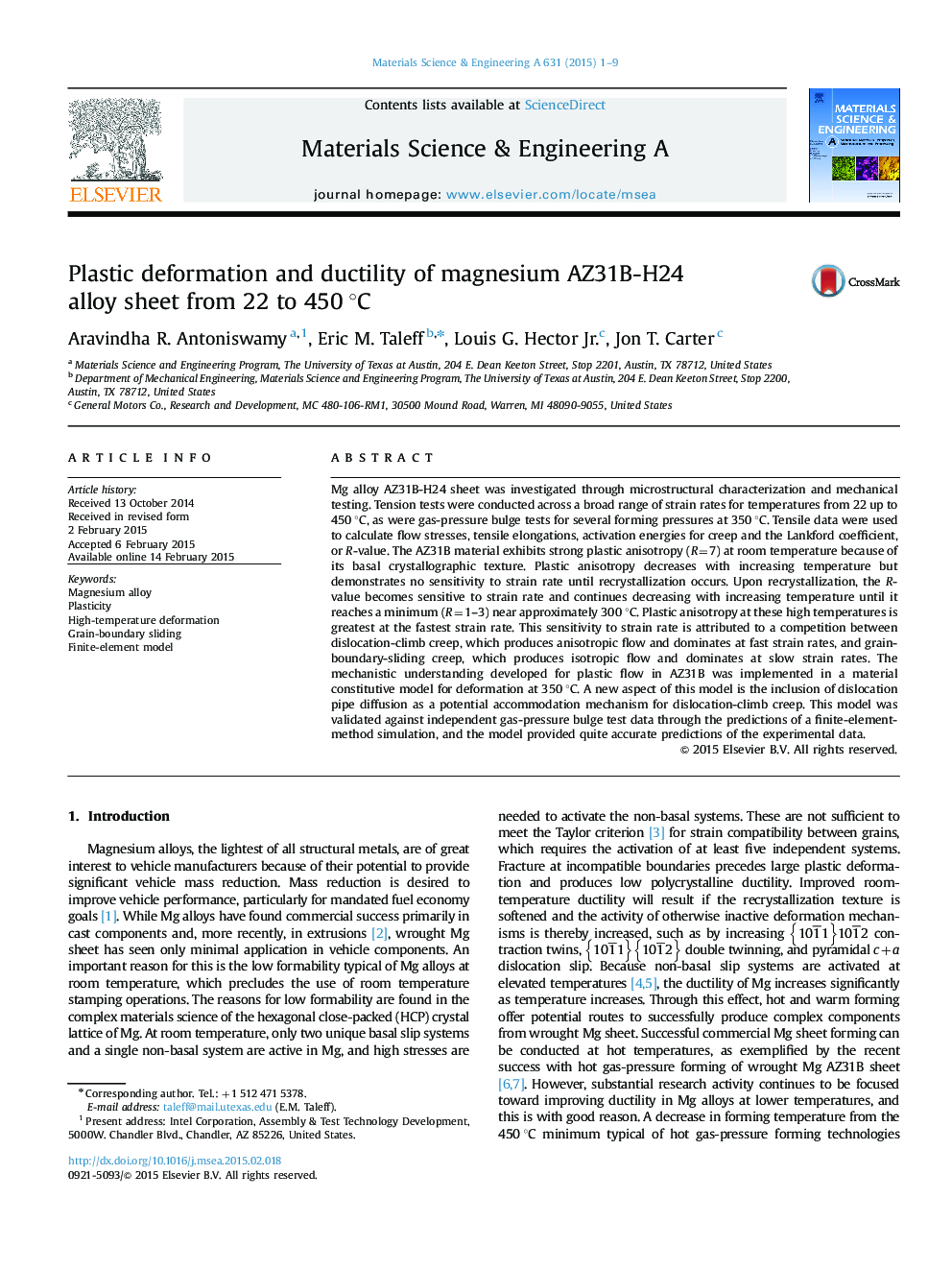| Article ID | Journal | Published Year | Pages | File Type |
|---|---|---|---|---|
| 1574400 | Materials Science and Engineering: A | 2015 | 9 Pages |
Abstract
Mg alloy AZ31B-H24 sheet was investigated through microstructural characterization and mechanical testing. Tension tests were conducted across a broad range of strain rates for temperatures from 22 up to 450 °C, as were gas-pressure bulge tests for several forming pressures at 350 °C. Tensile data were used to calculate flow stresses, tensile elongations, activation energies for creep and the Lankford coefficient, or R-value. The AZ31B material exhibits strong plastic anisotropy (R=7) at room temperature because of its basal crystallographic texture. Plastic anisotropy decreases with increasing temperature but demonstrates no sensitivity to strain rate until recrystallization occurs. Upon recrystallization, the R-value becomes sensitive to strain rate and continues decreasing with increasing temperature until it reaches a minimum (R=1-3) near approximately 300 °C. Plastic anisotropy at these high temperatures is greatest at the fastest strain rate. This sensitivity to strain rate is attributed to a competition between dislocation-climb creep, which produces anisotropic flow and dominates at fast strain rates, and grain-boundary-sliding creep, which produces isotropic flow and dominates at slow strain rates. The mechanistic understanding developed for plastic flow in AZ31B was implemented in a material constitutive model for deformation at 350 °C. A new aspect of this model is the inclusion of dislocation pipe diffusion as a potential accommodation mechanism for dislocation-climb creep. This model was validated against independent gas-pressure bulge test data through the predictions of a finite-element-method simulation, and the model provided quite accurate predictions of the experimental data.
Keywords
Related Topics
Physical Sciences and Engineering
Materials Science
Materials Science (General)
Authors
Aravindha R. Antoniswamy, Eric M. Taleff, Louis G. Jr., Jon T. Carter,
